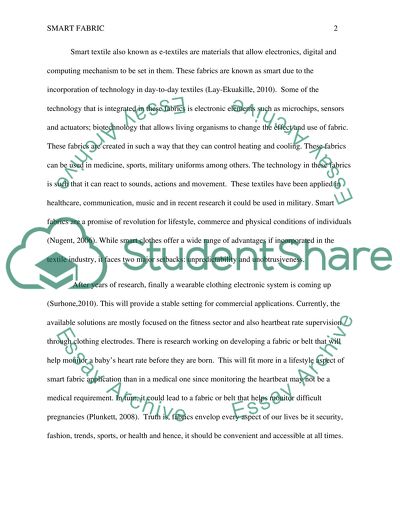Cite this document
(“Smart Fabric Research Paper Example | Topics and Well Written Essays - 1250 words”, n.d.)
Retrieved from https://studentshare.org/design-technology/1448094-smart-fabric
Retrieved from https://studentshare.org/design-technology/1448094-smart-fabric
(Smart Fabric Research Paper Example | Topics and Well Written Essays - 1250 Words)
https://studentshare.org/design-technology/1448094-smart-fabric.
https://studentshare.org/design-technology/1448094-smart-fabric.
“Smart Fabric Research Paper Example | Topics and Well Written Essays - 1250 Words”, n.d. https://studentshare.org/design-technology/1448094-smart-fabric.


